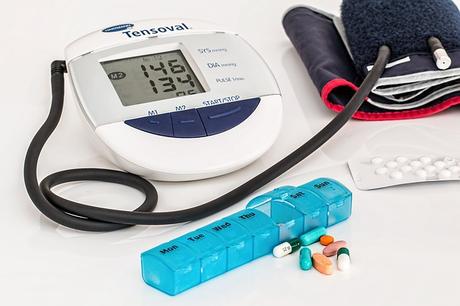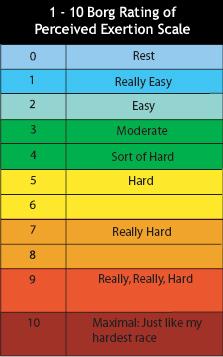For information purposes only. Exercise at your own risk
Overview – Exercise & Heart Disease
If you already have heart disease and/or issues with your heart, then it is crucial that you speak to your doctor before changing your physical acitvity levels. A doctor can review your ‘clinical status’ before giving you the all-clear. More information in this pdf here.
Physical inactivity is a major risk factor for developing coronary artery disease.
This disease occurs when deposits of cholesterol, calcium and other substances cause a narrowing of the arteries supplying blood to the heart.
Physical inactivity is associated with high triglyceride levels, low levels of HDL (good) cholesterol, high levels of LDL (Bad) cholesterol, high blood pressure and type 2 diabetes.

All of these factors increase an individuals risk of a heart attack and stroke. For example the high blood sugar levels associated with type 2 diabetes can cause damage to artery walls which in turn provide the foundations for cholesterol to deposit upon the wall.
As these deposits build up they can block blood vessels. People who are physically inactive are over twice as likely to develop coronary heart disease than their active peers. It is estimated that 20 million adults in the UK are ‘physically inactive’ (See the 2017 BHF report here)
 Walking is a great way to begin exercising
Walking is a great way to begin exercising
Recommendations / Guidance For Keeping Your Heart Healthy
(AT YOUR OWN RISK, always consult your GP first)
Even moderately intense physical activity such as brisk walking is beneficial when done regularly for a total of 30 minutes or longer on most or all days. Remember that exercise can be accumulated throughout the day. Gardening, cleaning etc all count as physical activity or exercise, as well as more formal classes etc. Remember that exercise has many benefits beyond simply enhancing CV health.
Bones and muscles become stronger, core stability is enhanced, it can help to maintain weight and also improve sleeping patterns. It improves both physical and mental health. Adults should aim to complete 30 mins of exercise on at least 5 days of each week. The intensity should be high enough so that you feel slightly warmer and so that you breath more heavily.
To start off with it should not be so hard that you can not talk. If 30 minutes is too hard, start off with 5 minutes and look to build up to 30 mins on most days within a month or two. Some activities may include brisk walking, swimming, cycling and/or gardening. Some safety points include: If you feel pain or a high level of discomfort then you should stop
Increase the duration and intensity of activity gradually begin very gradually for the first two or three mintues of an activity
Do not exercise if you are unwell
Wear a helmet if cycling and walk in well lit areas at night
Talk to your GP first, especially if you are taking any prescription medication.
Designing yourself an Exercise Programme
If you’re planning on getting fit, then why not design yourself a programme. This often helps organize your exercise and helps to prompt and motivate you to begin your regime.
Programmes generally include the Frequency, Intensity and Duration of each activity session. However, for most simply writing in your diary to walk 30 minutes on Wednesday morning is a good start.
Frequency (how often) and Duration (time of each session) are pretty self explanatory. However calculating intensity is a bit more tricky. Intensity can be calculated using Rate of Perceived Exertion – usually from 1 to 10:

Please be aware that another version of the Borg scale rates exertion from 1 to 20 and not 1 to 10 as shown above!
Percentage of VO2Max or percentage of maximum Heart rate.
Percentage of Max HR is probably the most commonly utilised amongst recreational exercises, however, the calculation of maximum heart rate is not particularly accurate, unless you have a proper test done in a sport science lab. The easiest and most well known way of calculating your Max HR is to minus your age from 220. there are a number of other ways:
http://www.brianmac.co.uk/maxhr.htm
For most people it would be a good idea to start of with an exercise intensity of around 6 on the Borg Scale (although you should discuss this with your doctor). Many forms of exercise, including weight training have been shown to decrease the risk of heart disease.
http://www.ncbi.nlm.nih.gov/sites/entrez?db=pubmed&uid;=12387651&cmd;=showdetailview&indexed;=google
whilst low intensity exercise is perhaps safer in the short term for a previously sedentary individual, there is some evidence that higher intensity exercise can have greater benefits to cardiovascular health
http://www.ajcn.org/cgi/content/abstract/75/5/818
Exercise for Cardiovascular Disease – Conclusion
·Benefits of Exercise High blood pressure — Regular aerobic activities can lower blood pressure.
·Cigarette smoking — Smokers who become physically active are more likely to cut down or stop smoking.
·Diabetes — People at their ideal weight are less likely to develop diabetes.
Physical activity may also decrease insulin requirements for people with diabetes.
·Obesity and overweight — Regular physical activity can help people lose excess fat or stay at a reasonable weight.
·High levels of triglycerides — Physical activity helps reduce triglyceride levels. High triglycerides are linked to developing coronary artery disease in some people.
·Low levels of HDL — Low levels of HDL (“good”) cholesterol (less than 40 mg/dL for men/less than 50 mg/dL for women) have been linked to a higher risk of coronary artery disease. Recent studies show that regular physical activity can significantly increase HDL cholesterol levels and thus reduce your risk. other benefits of physical activity
·Physical activity builds healthy bones, muscles and joints, and reduces the risk of colon cancer. Millions of Americans suffer from illnesses that can be prevented or improved through regular physical activity.
·Physical activity also helps psychologically. It reduces feelings of depression and anxiety, improves mood and promotes a sense of well-being.
·The 1996 Surgeon General’s Report on Physical Activity also suggests that active people have a lower risk for stroke.
“Specifically, a direct connection has been found between exercise and lower death rates from heart attacks, stroke, high blood pressure, non–insulin-dependent diabetes, brittle bones, some cancers, anxiety, and depression”

